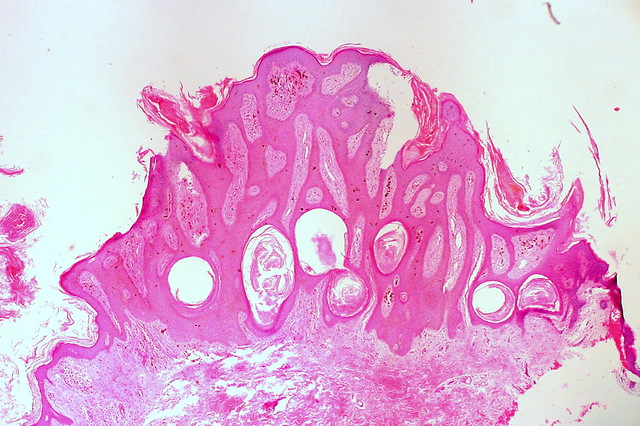Seborrheic keratosis, often abbreviated as SK, is a common skin condition that affects millions of people worldwide. These growths are noncancerous and typically appear as rough, waxy, or scaly patches on the skin. While they may look concerning, seborrheic keratoses are harmless and do not pose any significant health risks. In this article, we will explore what seborrheic keratosis is, its potential causes, common symptoms, and the available methods for removal.

What Is Seborrheic Keratosis?
Seborrheic keratosis refers to benign growths that develop on the surface of the skin. They can occur anywhere on the body but are most commonly found on areas exposed to the sun, such as the face, shoulders, back, and chest. These growths are usually brown, black, or light tan in color and have a slightly raised, wart-like appearance. Despite their sometimes alarming appearance, they are not contagious and do not lead to cancer.
The texture of these growths can vary. Some may feel smooth and slightly elevated, while others might be rough and crumbly. People often describe them as having a “stuck-on” appearance, as if they could be peeled off the skin. Although they are generally painless, some individuals may experience itching or irritation, especially if the growths rub against clothing or jewelry.
Who Is Affected by Seborrheic Keratosis?
- Age: This condition is more common in older adults, typically appearing in individuals over the age of 50. However, younger people can also develop these growths.
- Genetics: A family history of seborrheic keratosis increases the likelihood of developing the condition.
- Skin Type: People with fair skin may notice these growths more easily due to their contrasting color, but individuals with darker skin tones can also be affected.
Potential Causes of Seborrheic Keratosis
The exact cause of seborrheic keratosis remains unknown, but several factors are believed to contribute to its development. Understanding these factors can help individuals better manage the condition and seek appropriate treatment when necessary.
Genetic Predisposition
One of the most significant contributors to seborrheic keratosis is genetics. If your parents or close relatives have had these growths, you are more likely to develop them as well. Research suggests that certain inherited traits may make some individuals more prone to developing these skin lesions.
Aging Process
As people age, their skin undergoes various changes, including the development of seborrheic keratosis. The condition is rare in children and young adults but becomes increasingly common with advancing age. This suggests that the natural aging process plays a role in the formation of these growths.
Sun Exposure
While seborrheic keratosis is not directly caused by sun exposure, prolonged time in the sun may exacerbate the condition. Ultraviolet rays can damage the skin’s outer layer, potentially triggering the growth of these lesions. This is why they are often found on areas of the body frequently exposed to sunlight.
Hormonal Changes
Some studies suggest that hormonal fluctuations, particularly during pregnancy or menopause, may influence the development of seborrheic keratosis. Although more research is needed to confirm this link, it highlights the complex interplay between hormones and skin health.
Symptoms of Seborrheic Keratosis
Recognizing the symptoms of seborrheic keratosis is essential for distinguishing it from other skin conditions. While these growths are generally harmless, they can sometimes resemble more serious issues like melanoma, making accurate identification important.
Appearance
The most noticeable symptom of seborrheic keratosis is the presence of raised, discolored growths on the skin. These growths can range in size from tiny dots to larger patches measuring several centimeters across. Their color varies widely, from light tan to dark brown or black.
Texture
The texture of these growths can differ significantly. Some may feel smooth and waxy, while others are rough and crumbly. Many people describe them as having a “pasted-on” appearance, as though they are sitting on top of the skin rather than growing out of it.
Location
These growths can appear almost anywhere on the body, but they are most commonly found on areas exposed to the sun, such as the face, neck, shoulders, back, and chest. They can also develop in less exposed areas, such as the abdomen or thighs.
Associated Discomfort
Although seborrheic keratosis is typically painless, some individuals may experience mild discomfort. For example, if the growths rub against clothing or jewelry, they can become irritated and itchy. In rare cases, bleeding may occur if the growths are scratched or injured.
Methods for Removing Seborrheic Keratosis
While seborrheic keratosis does not require treatment unless it causes discomfort or cosmetic concerns, many people choose to have these growths removed for aesthetic reasons. Several safe and effective methods are available for removing these lesions.
Cryotherapy
Cryotherapy involves freezing the growths using liquid nitrogen. This method is quick and minimally invasive, making it a popular choice for removing small or isolated lesions. During the procedure, a healthcare provider applies liquid nitrogen to the growth, causing it to blister and eventually fall off. While cryotherapy is effective, it may leave behind slight discoloration or scarring.
Electrocautery
Electrocautery uses an electric current to burn off the growths. This method is particularly useful for larger or thicker lesions that may not respond well to other treatments. A local anesthetic is typically administered before the procedure to minimize discomfort. Electrocautery is precise and allows for targeted removal, but it may require multiple sessions for optimal results.
Shave Excision
Shave excision involves using a scalpel to shave off the growth at the skin’s surface. This method is ideal for raised lesions that protrude significantly from the skin. After the procedure, the area may be cauterized to stop any bleeding and reduce the risk of infection. Shave excision is quick and effective but should only be performed by a qualified healthcare professional.
Laser Therapy
Laser therapy uses concentrated beams of light to destroy the growths. This method is highly precise and minimizes damage to surrounding tissue, making it a good option for sensitive areas like the face. Laser therapy is generally well-tolerated, but it may require multiple sessions to achieve the desired outcome.
Topical Treatments
In some cases, topical treatments may be used to address smaller or less severe growths. These treatments often contain chemicals that gradually dissolve the lesion over time. While topical options are less invasive, they may take longer to produce visible results compared to surgical methods.
When to See a Doctor
Although seborrheic keratosis is generally harmless, there are instances where it is important to consult a healthcare provider. If you notice any sudden changes in the size, shape, or color of a growth, it is advisable to seek medical attention. Additionally, if a lesion becomes painful, bleeds excessively, or shows signs of infection, professional evaluation is recommended.
It is also worth noting that seborrheic keratosis can sometimes be mistaken for more serious conditions, such as melanoma. A dermatologist can perform a thorough examination and, if necessary, conduct a biopsy to rule out other diagnoses.





